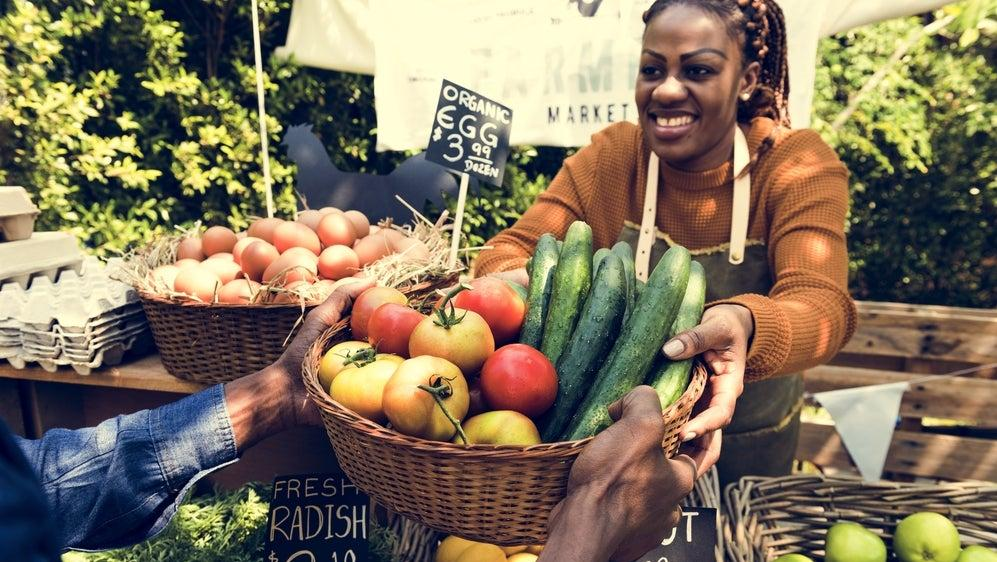Inflation Is Hitting Small Farms Hard
Lingering supply chain issues and climate change are making your farmers market veggies more expensive.
We already know grocery prices are sky-high. They're up 11.9% from a year ago, to be exact. And while I'm willing to spend a little more during berry season, I still got sticker shock when I stopped by my local farmers market last week and saw a half-pint of blueberries going for $9. It knocked the wind out of me—but it was also a good reminder that a trip to the farmers market is an up-close look at the state of our food system. So, why are farmers market prices so high right now?
High costs are crushing small farms
Mark Pocica, a produce farmer from Watseka, Illinois, tells me that he's had to increase prices significantly over the last year—and fuel costs are largely to blame. "We drive about 90 miles one way for these markets," he tells me. "That, along with higher supply costs, makes things really tough." He also notes that rising costs impact farmers in surprising places—the plastic bags, cardboard containers, and twist ties used to package produce, for example. "It's nickel and dime stuff, but it adds up," he says.
The proof is also in the planting: Small farms are currently facing sky-high fertilizer costs. Anhydrous ammonia is a source of nitrogen fertilizer, a product that reached an all-time price high earlier this year. Agricultural market insights resource DTN shows other fertilizers peaking, even doubling in price this year as well. Pocica confirms the hike. "Seed costs and fertilizer costs have skyrocketed for us, even the organic stuff," he says.
Pandemic supply issues just won’t quit
For Erica Burke of Hillside Orchards, a family-owned fruit farm in Berrien Springs, Michigan, lingering supply chain issues are even more worrisome. "We've had to raise prices as much as $2 per pint [of berries]," Burke tells me. She echoes Pocica's concerns about fuel and fertilizer costs, but adds that she's also been waiting on some crucial farm supplies for two years, forcing her to splurge on higher-priced alternatives. "If my trees die, I can't get replacement trees," she says. "I can't get boxes for packaging. I can't get fertilizer. It's had a huge, huge impact."
Climate concerns create a murky future
While dramatic price increases and supply issues will (eventually) even out as the economy stabilizes, farmers are facing another threat that will likely get much, much worse: climate change. The Environmental Defense Fund reports that "global farming productivity is 21% lower than it could have been without climate change." That statistic isn't surprising given the very clear consequences of drought and flooding, both of which have already impacted this year's harvest.
Between extreme weather, skyrocketing costs, and supply shortages, it's not hard to see that small farmers are struggling. And while I'm certainly not enthused about paying $9 for a half-pint of blueberries, I've decided to work farmers market berries into my grocery budget for the week. It's the easiest way to help your local farmer through what could become a full-scale agricultural crisis.
